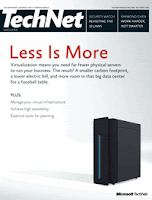I have had some great comments so far on my script, so I thought I would start thinking about the next version, let me know what you want.
So far…….
An Index page with linkable subjects to the following:
Index
Virtual Center
-> Cluster information
-> Resource Pool information
-> Snapshot information
-> Vlan Information
Esx Hosts
-> Host Information
-> Host Configuration
-> -> Hardware
-> -> Processor
-> -> Memory
-> -> Storage
-> -> Networking
-> -> Storage Adapters
-> -> Network adapters
Software
-> Licensed features
-> Time Configuration
-> DNS and Routing
-> Virtual Machine Startup/Shutdown
-> Virtual machine Swapfile Location
-> Security Profile
-> System resource Allocation
Virtual Machines
-> Vm information Client folder X (name,os,cpu,mem,disk,tools version,power,discr.)
-> Vm information Client folder Y name,os,cpu,mem,disk,tools version,power,discr.)
-> Vm information Client folder Z (name,os,cpu,mem,disk,tools version,power,discr.)
Datastores
-> Datastore information
Options to run the script:
Report.ps1 virtalcenterserver /All
Report.ps1 virtalcenterserver /only VC and ESX Host configuration
Report.ps1 virtalcenterserver /only vms in map X
Thanks to Greetz for the ideas.

